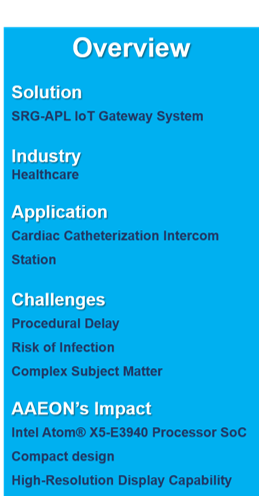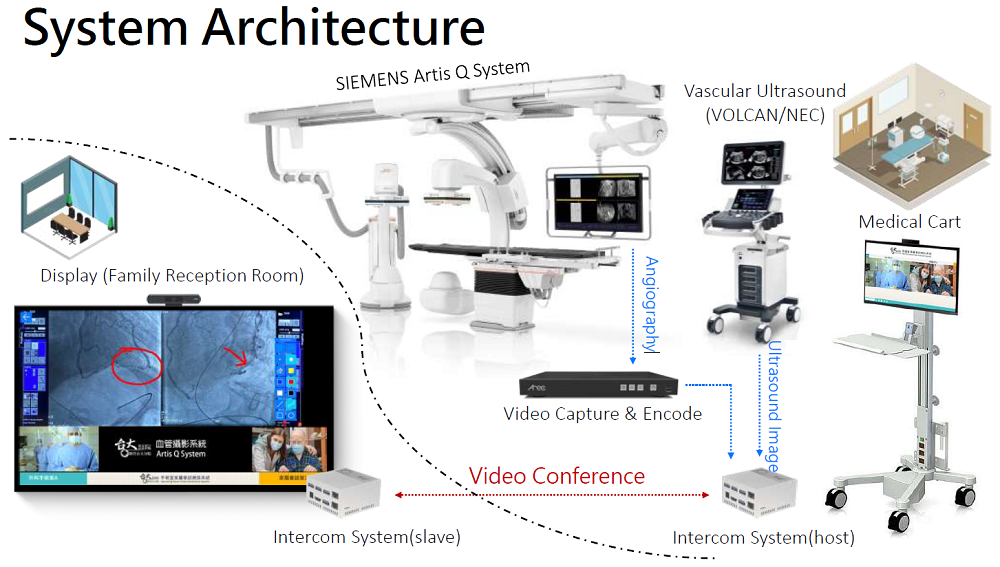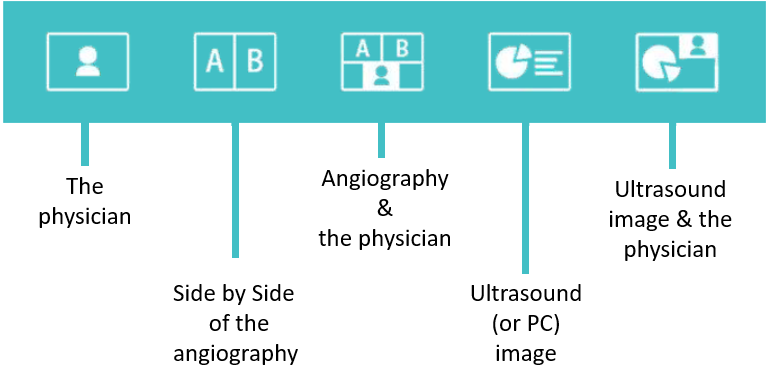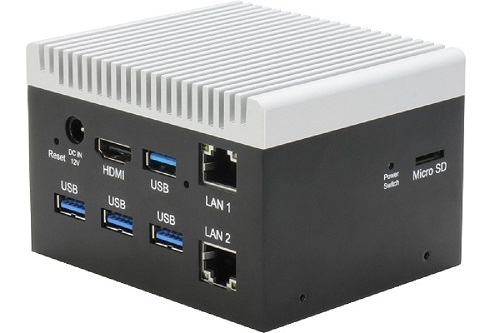Adopting IoT as the Gateway to Doctor-Family Communication During Surgical Procedures

Cardiac catheterization and vascular ultrasounds are typically safe medical procedures performed to diagnose or treat certain heart conditions, such as arterial narrowing. With catheterization, doctors can inject contrast dye through a blood vessel to the heart and perform tests such as angiograms to diagnose and operate on the heart as the problem is identified. Conversely, vascular ultrasounds use sound waves to identify problems in a less invasive way.
Despite being common and safe, there are risks involved in both procedures which can require intervention, necessitating communication with a patient’s family members to explain complex issues or obtain informed consent for medical intervention.
To address this, the Hsin-Chu Branch of National Taiwan University Hospital sought a way to efficiently communicate with the family members of patients using an interactive intercom solution from AREC Inc., powered by AAEON’s SRG-APL IoT Gateway System. The wider aim of this project was to reduce delays to surgical intervention and mitigate the risks associated with doctors having to leave and re-enter the cardiac catheterization laboratory to discuss the procedure with the patient’s family.
The Challenges
All surgeries require a sterile atmosphere, which can be compromised when a doctor needs to leave the laboratory to discuss treatment options with a patient’s family. Typically, this involves the removal of the doctor’s surgical attire, following which he will go to a waiting or reception room to discuss the procedure with the family face-to-face.
To resume the procedure, the doctor would then need to scrub back in and follow strict hygiene precautions. This poses two challenges, the first being the time involved, and the second being the increased risk of infection that comes with exiting and re-entering the cardiac catheterization laboratory.
The Solution
Powered by AAEON’s Intel®-based, CE-RED certified SRG-APL IoT Gateway System, the AREC Intercom Station provided a solution to both challenges. Easily integrated with the Artis Q vascular ultrasound system imaging interface used by NTUH’s Hsin-Chu Branch, this application enabled doctors to communicate with a patient’s family from the procedure room, eliminating the aforementioned challenges.
Thanks to the SRG-APL’s compact size of just 3.16” x 3.7” x 2.5” (80.28mm x 95mm x 63.6 mm), an AREC Intercom Station could be installed in a cart within the laboratory alongside an all in one PC, while a second device was affixed to a screen located in the family reception room. The physician-side device could then call to the family’s reception room-side device to provide surgical explanations and 3D vascular ultrasound imaging via multi-screen functionality.

Utilizing the SRG-APL’s two Gigabit Ethernet RJ-45 LAN ports, the physician-side device could transfer different combinations of 3D vascular imaging from USB camera feeds connected to the SRG-APL’s four USB 3.0 slots via the hospital’s intranet. When not in use, the reception room screen would play health education videos, the files for which being located on the reception room-side device via the additional storage provided by the SRG-APL’s USB ports.
Unlike traditional video conferencing applications, the intercom solution contained multi-screen synchronized video display, allowing the doctor to select which USB camera feeds would be displayed. This meant that while discussing a procedure virtually, the patient’s family could be shown a split screen containing any combination of face-to-face conferencing with the doctor, live video feed of the angiography, or intravascular ultrasound images.
Furthermore, AREC’s software provided the doctor with an annotation function through the touch interface of the host-device cart’s panel PC. Discussing the procedure with an interactive visual display gave the doctor a multidimensional mode of communication through which to convey complex surgical concepts without leaving the room.

Impact/Why AAEON?
There are a number of key attributes that made the SRG-APL suitable for the NTUH Hsin-Chu Branch’s intercom solution. Powered by the Intel Atom® X5-E3940 Processor SoC, and equipped with Intel HD 500 Graphics technology, the SRG-APL provided the application with the capacity to transmit clear images and video feed to the reception-side device, which would then be shown on the reception room monitor via its HDMI 1.4 port.
Further, the device’s multiple USB ports provided ample connections for the physician-side device cameras and speakers, along with additional storage for the purpose of recording the procedure. The SRG-APL’s HDMI 1.4 support provided the ideal conduit for high-resolution images and video feed to be transmitted to the reception room display, aided by Intel HD 500 Graphics.
The final benefit was the ease with which the SRG-APL could be integrated into the hospital’s existing equipment. Its compact dimensions made for easy deployment both in an operating room cart and mounted onto the reception room display screen.
The successful deployment of the AREC Intercom Station opens the door for discussions of how IoT applications can improve the dialogue between doctors and patients’ families during time-critical procedures. AAEON’s IoT gateway systems offer a range of benefits to make healthcare smarter, safer, and more sophisticated.

For more information about the SRG-APL, please visit our product page.
